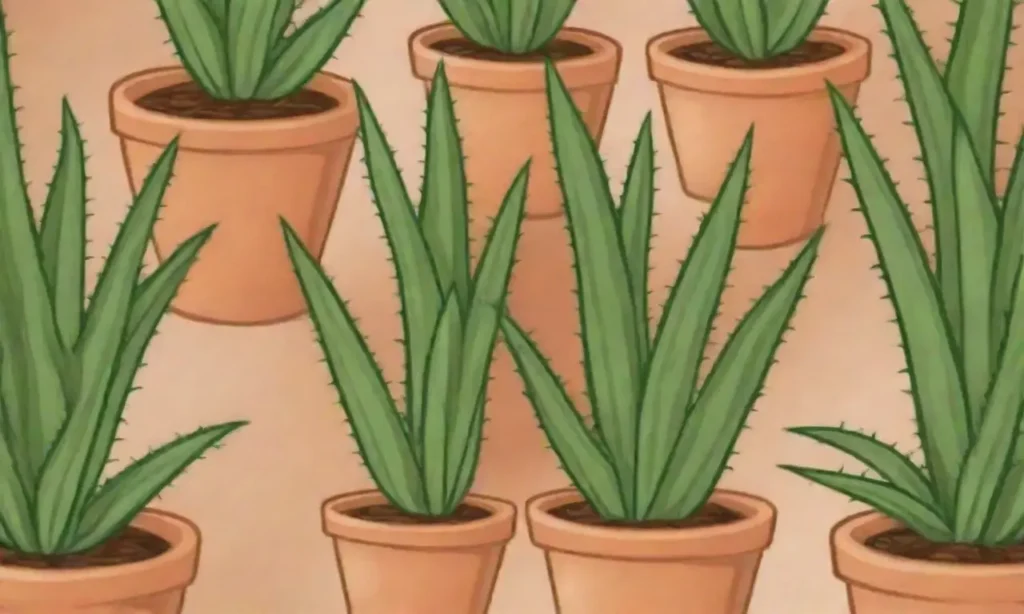
The Popularity of Aloe Vera: A Versatile Succulent Variety

Introduction
Aloe Vera is a remarkable desert plant that has captivated the hearts of many for centuries. Known for its striking appearance and numerous health benefits, this succulent is more than just an aesthetically pleasing addition to your home or garden; it also serves a myriad of practical applications in skincare, medicine, and culinary practices. As we enhance our lifestyles with natural and eco-friendly products, Aloe Vera has gained immense popularity, leading to increased interest in its cultivation and uses around the globe.
In this article, we will delve deep into the reasons behind the popularity of Aloe Vera, exploring its various benefits, uses, cultivation practices, and how it seamlessly integrates into modern living. From its rich historical roots to its trending status in wellness and beauty, Aloe Vera's versatility makes it a plant worth knowing about. We'll explore its biology, applications in everyday life, and how you can grow and care for it sustainably.
The Biology of Aloe Vera
Aloe Vera is a succulent plant species belonging to the genus Aloe, which consists of over 500 species. It is native to the Arabian Peninsula but is also widely cultivated in tropical and subtropical regions around the world. Aloe Vera leaves are thick and fleshy, characterized by a vibrant green hue, containing a gel-like substance that is either transparent or milky in color. This gel is the treasure trove of nutrients, enzymes, vitamins, and minerals that make Aloe Vera so beneficial.
The plant thrives in warm climates and is well-known for its drought-resistant qualities. Aloe Vera grows best in well-draining soil and requires minimal water, which contributes to its popularity among home gardeners and enthusiasts alike. The succulent is capable of storing water in its leaves, enabling it to withstand periods of drought that would damage other plants. This trait not only makes Aloe Vera an exceptionally resilient plant but also underscores its suitability for diverse climatic conditions.
In addition to its aesthetic appeal and resilience, Aloe Vera showcases an intriguing reproductive mechanism. The plant can reproduce both sexually via seeds, and asexually through offsets or "pups" that sprout around its base. This adaptability makes Aloe Vera relatively easy to grow and propagate at home, further enhancing its appeal to gardening aficionados. Understanding the biological features of Aloe Vera is crucial for anyone looking to cultivate this versatile plant, as it helps us appreciate its resilience, beauty, and practical benefits.
Health Benefits of Aloe Vera
One of the primary reasons for Aloe Vera's widespread popularity is its extensive health benefits. The gel of Aloe Vera is rich in minerals like calcium, magnesium, and zinc, as well as vitamins A, C, and E—powerful antioxidants that contribute to skin health. The application of Aloe Vera gel can soothe minor burns, abrasions, and skin irritations, making it a staple in first-aid kits around the world. Furthermore, research has indicated that Aloe Vera may assist in reducing inflammation and promoting faster healing due to its unique composition of polysaccharides and glycoproteins.
In addition to its topical applications, Aloe Vera can be consumed in juice form. Aloe Vera juice is known to benefit the digestive system by acting as a natural laxative, helping to alleviate constipation and promote overall gut health. The high water content of Aloe Vera, combined with compounds that have a soothing effect on the digestive tract, makes it an excellent choice for individuals seeking to support their gastrointestinal wellness. Many health enthusiasts incorporate Aloe Vera juice into their daily routines, highlighting its role as a natural detoxifier and nutrient booster.
 Decorating with Succulents: Popular Varieties for Every Style
Decorating with Succulents: Popular Varieties for Every StyleMoreover, Aloe Vera has also gained traction as a natural remedy for managing issues such as diabetes, cholesterol levels, and high blood pressure. Some studies suggest that the consumption of Aloe Vera can enhance blood glucose levels and lipid profiles in methodical experiments. While more comprehensive research is needed, the preliminary findings are encouraging. This multifaceted plant has thus earned its place in health discussions, with many people turning to it for natural wellness solutions.
Aloe Vera in the Beauty Industry

The beauty industry has also embraced Aloe Vera, recognizing its remarkable capability to enhance skincare and cosmetic products. The plant's natural hydrating properties make it ideal for a range of skincare applications, from moisturizers to face masks. Aloe Vera's gel is known to deliver an intense burst of moisture to the skin without leaving a greasy residue, making it perfect for both oily and dry skin types. Consequently, many beauty brands have introduced Aloe Vera-infused products, targeting consumers who favor natural ingredients in their beauty regimens.
Moreover, Aloe Vera's anti-inflammatory properties amplify its appeal in the realm of skincare. Products featuring Aloe Vera have been lauded for their ability to reduce redness, alleviate sunburn, and soothe irritated skin. Because of its gentle and natural formulation, Aloe Vera gel is often recommended for use on sensitive skin and is frequently included in baby care products as well. This versatility solidifies Aloe Vera's place in personal care routines, appealing to consumers with varying skin types and concerns.
In addition to skincare, Aloe Vera has made its mark in haircare as well. The plant is believed to strengthen hair strands, promote healthy growth, and combat dandruff due to its nourishing properties. Aloe Vera is often found in shampoos, conditioners, and hair masks. The natural enzymes present in Aloe Vera can aid in cleansing the scalp by removing dead skin cells and excess oil, effectively maintaining a healthy scalp environment. As a result, the plant has become a common ingredient in natural haircare products, appealing to individuals seeking chemical-free solutions for their hair concerns.
Cultivating Aloe Vera at Home
Growing your own Aloe Vera at home can be a rewarding experience, allowing you to enjoy the plant's benefits at any time. Fortunately, Aloe Vera is relatively easy to cultivate, making it an excellent choice for novice gardeners. The first step in successfully growing Aloe Vera is to select the ideal location for your plant. Aloe Vera thrives in bright, indirect sunlight; therefore, placing it near a window or in a well-lit room is recommended. However, it is essential to ensure that the plant is not exposed to harsh, direct sunlight for extended periods, as this can lead to leaf burn.
When it comes to soil, Aloe Vera requires a well-draining potting mix. A cactus potting mix or a mixture of regular potting soil with sand or perlite is ideal. This type of soil will prevent water from accumulating around the roots, which can lead to root rot. Once planted, Aloe Vera requires infrequent watering; it is usually best to allow the top inch or two of soil to dry out completely between waterings. Overwatering is one of the most common mistakes made by Aloe Vera owners, so it's important to observe the plant's needs closely.
 Uncovering the Most Sought-After Succulent Varieties for 2024
Uncovering the Most Sought-After Succulent Varieties for 2024In terms of propagation, Aloe Vera can easily be multiplied through its offsets or "pups." Once the pups have grown to about a quarter of the size of the parent plant, they can be gently removed and re-potted in their own containers. This not only allows you to expand your collection but also ensures that the parent plant continues to thrive without the strain of supporting multiple offshoots. Embracing the joy of cultivating Aloe Vera offers not just aesthetic pleasure but also a sense of accomplishment as you care for a plant that serves multiple practical purposes in your daily life.
Conclusion
The ever-growing popularity of Aloe Vera is a testament to its versatility, resilience, and multi-purpose benefits. From being a staple in health and wellness to its integral role in beauty and skincare, Aloe Vera has proven itself as an invaluable addition to modern living. Its biologically fascinating characteristics, combined with its numerous applications, explain why so many people are drawn to this remarkable succulent.
More than just a trendy plant, Aloe Vera has deep roots in history, serving various cultures as a symbol of health, beauty, and longevity. Its adaptability to different environments further enhances its widespread presence and appeal, allowing people from all walks of life to incorporate Aloe Vera into their homes and lifestyles. As consumer preferences shift toward natural and eco-friendly products, Aloe Vera will likely continue to surge in popularity, becoming a quintessential component of sustainable living.
In conclusion, whether through its health benefits, beauty applications, or ease of cultivation, Aloe Vera stands out as a unique succulent that harmonizes wellness and nature. As you consider incorporating Aloe Vera into your life—be it as a plant in your home, a remedy in your skincare routine, or even as a refreshing juice—remember that this plant holds a treasure trove of benefits that can contribute positively to your well-being, making it a choice worth exploring.
If you want to read more articles similar to The Popularity of Aloe Vera: A Versatile Succulent Variety, you can visit the Popular Varieties category.

You Must Read